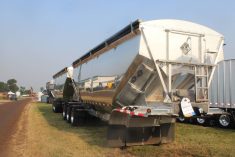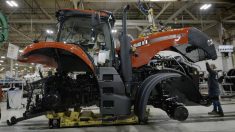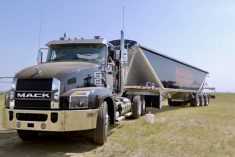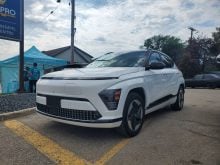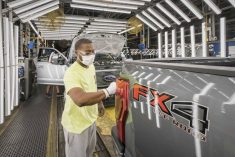In 1966 Ford was the first of the Detroit Three automakers to realize the Jeep brand was onto something. At the time, Kaiser, which bought Willys and therefore ownership of the Jeep brand, had turned the spunky little four-wheel drive into a growing line of Jeep-branded vehicles designed for weekend warriors who wanted to hit the backcountry with their tents and fishing poles. The SUV market, 1960s style, was born, and Ford wanted a piece of it.
Enter the First Generation Bronco.
The Bronco along with the International Scout, which had already debuted in 1960, became Jeep’s main rivals until the 1970s. That’s when Dodge and GM introduced their Ramcharger and Blazer (GMC Jimmy) respectively.
Read Also

Claas brings 1000 Series SP forage harvesters to Canada
In mid-August, Claas unveiled its new line of Jaguar forage harvesters at an event in Visalia, California, deep in the heart of that state’s dairy region.
After a 30-year run, Ford eventually abandoned the Bronco in 1996 in favour of the Explorer. Like the Scout, the Bronco might well have been relegated to history. But market trends are hard to predict. And now Ford is clearly thinking just like Jeep did in the 1960s: the company needs to look to the SUV and pickup market to seek its fortune.
“Ford helped start the off-road phenomenon and has majored in off-road capability for decades — from the Bronco to the Raptor,” said Jim Farley, Ford president, Global Markets in a press announcement in mid March. “Now, we’re ready to reclaim our rightful place as the off-road vehicle leader.”
(Those probably seem like fighting words to the folks over at Chrysler who now own the Jeep brand.)
As Ford prepares to revamp more than 75 per cent of its current product line, including dumping most of its car models in favour of new SUV designs, it’s easy to understand why. By 2020, Ford estimates SUV sales could account for 50 per cent of U.S. industry retail sales. And, of course, trucks and SUVs are much more profitable to build than lower-priced compact cars.

That, claims Ford, is a big reason why it’s reallocating $7 billion in capital from cars to SUVs. By 2020 it hopes to have an industry-leading line up of eight SUVs, five of which will have hybrid powertrains and one battery electric. Ford is aiming to have its SUV sales grow by 20 per cent — which is more than double the industry rate — to more than 950,000 units by 2020 and hit the one million mark by 2021.
A key part of their cunning plan to meet those targets is the return of the boxy First Generation Bronco design, albeit a modern version of the ’60s automotive icon. Ford claims the new Bronco will hit dealer showrooms for the 2020 model year.
So far, Ford has been pretty coy about what the new Bronco will actually look like up close. In the only official image released so far, the vehicle is covered under a tarp. But the overall bodylines clearly mimic that First Gen design pretty faithfully.
Among the other new SUVs Ford is developing is one in the unusual situation of not having a name — yet. The yet-to-be-named vehicle is described as a small utility, which some automotive journalists have described as generally appearing similar to Jeep’s Renegade.
Do you see a pattern developing here?
And oh yeah, the all-new Ranger pickup is about to enter the market as a 2019 model-year release. So the company has already started down the path toward its vision of global domination of the truck and SUV markets.





